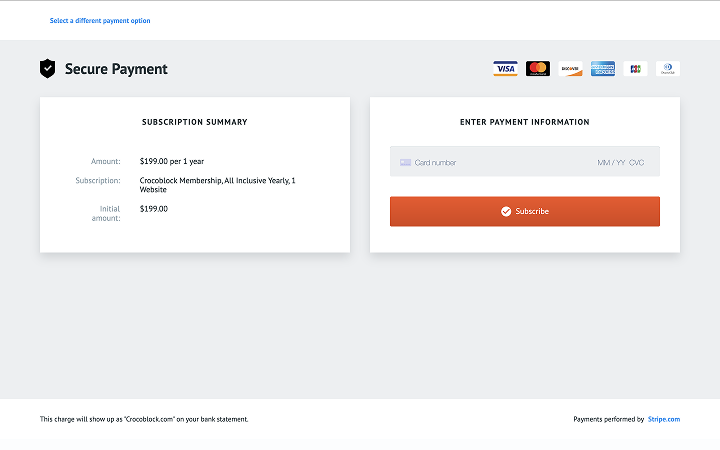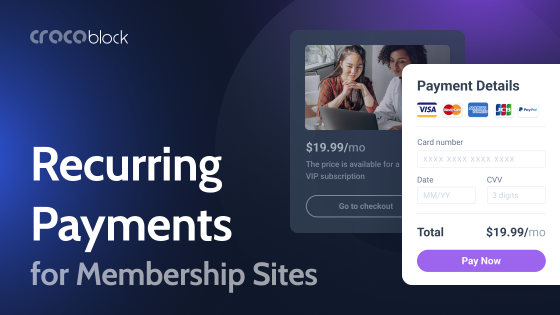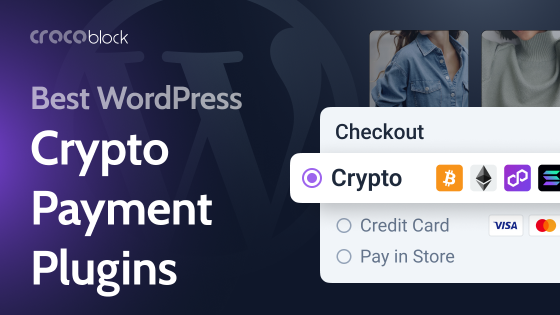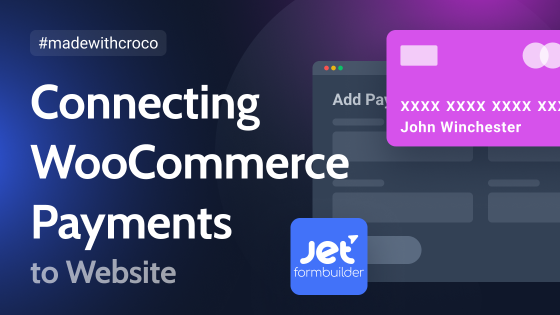Are you looking for ways to accept payments on your WordPress website?
If you’re running a website on WordPress – whether it’s an online store, a membership site, or you’re selling digital products – you’ll eventually need a reliable way to accept payments. Thankfully, WordPress offers a variety of flexible solutions for integrating secure and user-friendly payment systems.
In this article, I’ll walk you through the most popular methods to accept payments in WordPress and how to set everything up step by step. Let’s dive in.
How Do WordPress Payment Processes Work?
WordPress doesn’t have built-in payment functionality out of the box. To accept payments, you’ll need to connect your site to a payment gateway (like Stripe, PayPal, or WooCommerce Payments) using plugins or third-party integrations.
Here’s how the process usually works:
- The customer takes action. A person clicks a “Buy Now” button, adds a product to their cart, or submits a form with payment details.
- The payment plugin handles the transaction. The plugin securely “activates” the API of the payment gateway.
- Payment gateway processes it. The gateway (e.g., Stripe or PayPal) checks the payment method, verifies funds, and processes the transaction.
- Confirmation and delivery. The customer sees a confirmation message, and if it’s a digital product or service, delivery can be automated.
- You get paid. The funds are sent to your connected bank account – usually within a few business days, depending on your gateway.

How to Accept Credit Card Payments on WordPress
Accepting credit card payments on your WordPress site is easier than ever, thanks to the wide range of plugins available. Whether you’re selling a single service, offering subscriptions, or running a full online store, you can set up a smooth and secure checkout experience for your customers.
Here’s a step-by-step guide to get you started:
1. Choose a payment gateway
First, decide which payment processor you’d like to use. The most popular options include:
- Stripe – great for credit card payments, widely used, easy to set up;
- PayPal – well-known and trusted, also supports credit cards;
- WooCommerce Payments – designed specifically for WooCommerce stores.
Choosing the right gateway depends on your country, product, and audience.
For most users, Stripe is a flexible, developer-friendly solution that integrates easily with WordPress plugins. It’s one of the best options for selling digital goods, subscriptions, SaaS, or anything with recurring billing. However, it has very strict rules about what you can sell and in which countries it is available.
PayPal is another popular option. It’s accessible in more than 200 countries and allows payments even without a PayPal account. However, it also has some drawbacks. PayPal can freeze funds without explanation, offers poor customer support, and lacks seller protection. On the other hand, it has more lenient policies regarding what you can sell.
WooPayments is a Stripe-powered service. It’s tightly integrated with WooCommerce and makes refunds, disputes, and payouts more seamless for eCommerce websites.
There are many different payment gateways around the world, so you need to check which one works best for your products, country, and customers. For example, if most of your clients are in Europe, you might consider Klarna or Mollie. If you run a shop, you could try Square, among others.
2. Use a form plugin like JetFormBuilder
If you’re not running a full-fledged eCommerce store but still want to accept payments (e.g., for services, appointments, or digital products), JetFormBuilder is an excellent choice.
JetFormBuilder is a powerful form plugin that allows you to:
- Build custom forms with drag-and-drop ease.
- Add payment fields connected to Stripe, the variety of local and global payments provided by WooCommerce, or PayPal.
- Create conditional logic (e.g., different prices for different services).
- Automate actions after payment, such as sending emails or displaying thank-you pages.
How to set it up with JetFormBuilder:
- Install and activate JetFormBuilder and one of the payment add-ons (Stripe, PayPal, or WooCommerce checkout).
- Create a form with fields for customer info and pricing.
- Add the Payment Field and connect it to the payment gateway.
- Publish the form on any page or post.
- Test the process to ensure payments are processed smoothly.
JetFormBuilder gives you full control over the design and logic of your forms – perfect for freelancers, coaches, or anyone offering custom services.
How to Choose the Best Payment Solution for WordPress
Choosing the right payment solution for your WordPress website is crucial for both your business and your customers. The right payment system ensures smooth transactions, a positive user experience, and secure payments. Here’s a guide to help you make an informed decision:
Consider your business type
The first thing to think about is your business model. Are you running an eCommerce store, offering services, or selling digital products? Your business type will determine the features you need in a payment solution.
- E-commerce. If you’re selling physical or digital products, a full-featured solution like WooCommerce payments is ideal, as it comes with built-in payment gateways.
- Services. For businesses that sell services, you may want a simpler, form-based solution like JetFormBuilder with integrated Stripe or PayPal.
- Subscriptions or memberships. For recurring payments, look for payment gateways with subscription management features, such as JetFormBuilder and PayPal Recurring Payments add-on.
Payment gateway options
The payment gateway you choose will handle all of your transactions. The most popular ones are:
- Stripe;
- PayPal;
- Authorize.Net;
- WooCommerce Payments.
Transaction fees
Different gateways come with varying fee structures, which can impact your profit margins. Pay attention to:
- Setup fees: some payment gateways charge a one-time setup fee, but most major providers like Stripe, PayPal, WooCommerce Payments, Mollie, Klarna, and Square do not charge setup fees.
- Transaction fees: typically a percentage of the transaction amount, plus a flat fee.
- Stripe: 2.9% + $0.30 per transaction in the US, +1% for international cards.
- PayPal: 2.99% + a fixed fee for standard payments; 3.49% + a fixed fee for PayPal Checkout.
- WooCommerce Payments: 2.9% + $0.30 for domestic cards, +1% for international.
- Square: 2.6% + $0.15 (in-person), 2.9% + $0.30 (online), 3.5% + $0.15 (manual entry).
- Mollie: 1.8–2.9% + €0.10 per card transaction; €0.25 for SEPA/bank transfer.
- Klarna: 2.9%–5.99% + $0.30 depending on the product and country.
- Refund fees.
- Monthly fees:
- Stripe, PayPal, WooCommerce Payments, Square, and Mollie: no monthly fees for basic use.
- Klarna: no monthly fee in most cases, but fees may apply depending on the region or integration plan.
Choose a solution with fees that align with your business model and the volume of transactions you expect.
Security features
Security is paramount when dealing with payment information. Look for solutions that offer:
- SSL certificates. Ensures that all payment data transmitted between the user and your website is encrypted.
- PCI compliance. Payment gateways must meet the Payment Card Industry Data Security Standards (PCI DSS) to ensure that they process credit card payments securely.
- 2-factor authentication. Adds an extra layer of security for both you and your customers.
Make sure the solution you choose complies with these security standards to protect both your business and your customers.
User experience
A smooth and intuitive checkout process is key to minimizing cart abandonment. Ensure that the payment gateway or plugin you choose integrates well, supports multiple payment methods, is mobile-friendly, and has a clear and simple interface for a better user experience.
Global reach and currency support
If you plan to sell internationally, it’s important to choose a payment solution that supports multiple currencies and countries. Some gateways, like Stripe, are available in many countries and support a wide variety of currencies, so choose the best option.
Customer support
Ensure the payment provider offers customer support. This is essential in case you run into any issues with payments, fraud, or integration. Look for providers with 24/7 support via chat, phone, or email.
FAQ
The easiest way to accept payments on WordPress is by using a payment plugin or add-on like JetFormBuilder with the Stripe Payments add-on. For basic services or digital products, JetFormBuilder can help you create customizable payment forms that link directly to your Stripe or PayPal account.
Yes, you can accept credit card payments without an eCommerce store by using form plugins like JetFormBuilder or WP Simple Pay. These plugins allow you to create simple, customizable payment forms where customers can enter their credit card details for one-time payments, services, or donations, without needing the full functionality of an online store.
To accept subscription or recurring payments on WordPress, you can use plugins like WooCommerce Subscriptions or MemberPress.
Conclusion
Most website owners, in one way or another, want to accept payments for their services, products, or information. Today, this can be easily set up using the right plugins and payment gateways.
In this article, I’ve covered the key points to consider when choosing a payment method for your WordPress site.
Always align your choice with your business goals to find the most suitable payment system. Don’t forget to set up a “thank you” page and a post-payment email to let customers know what to expect next.
No matter the size of your business, offering a reliable and secure payment method will not only improve customer trust but also help you scale and grow.



